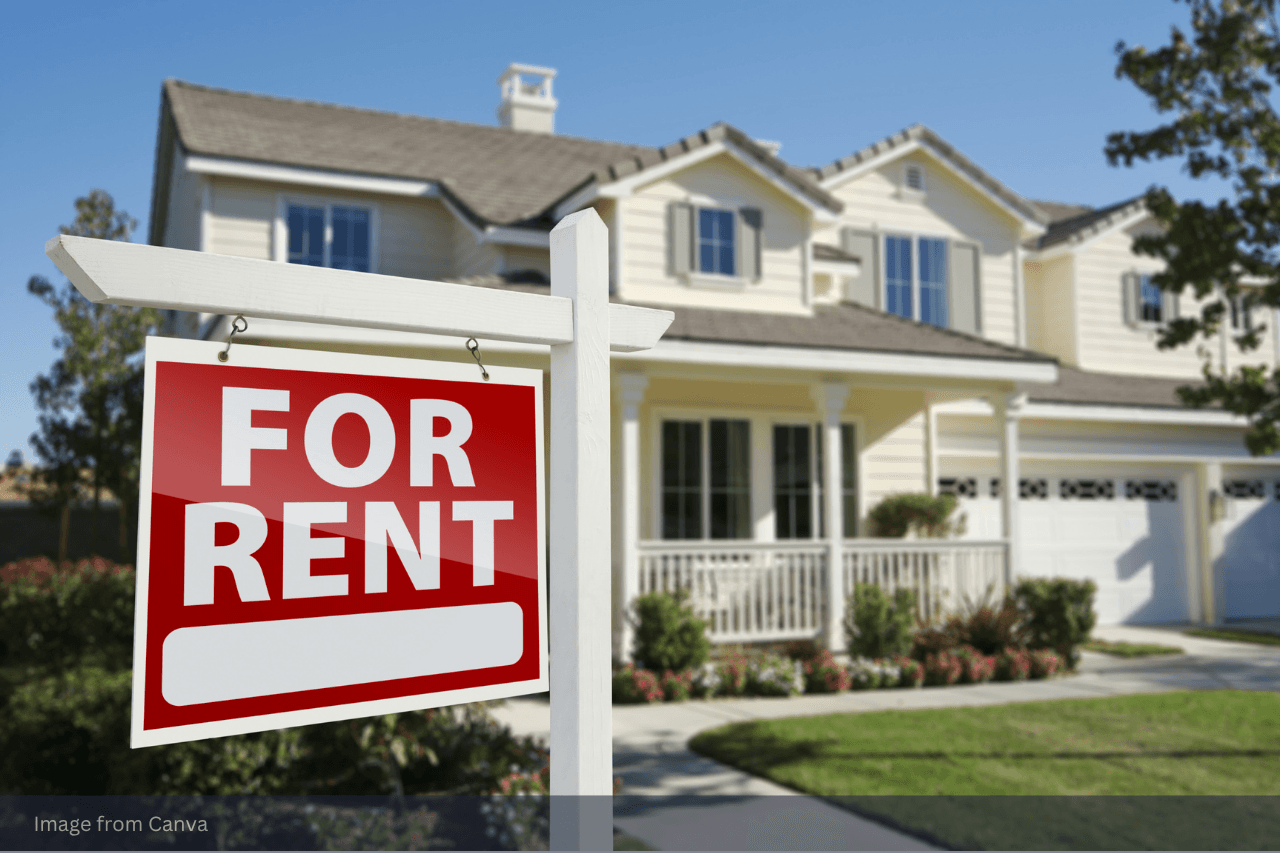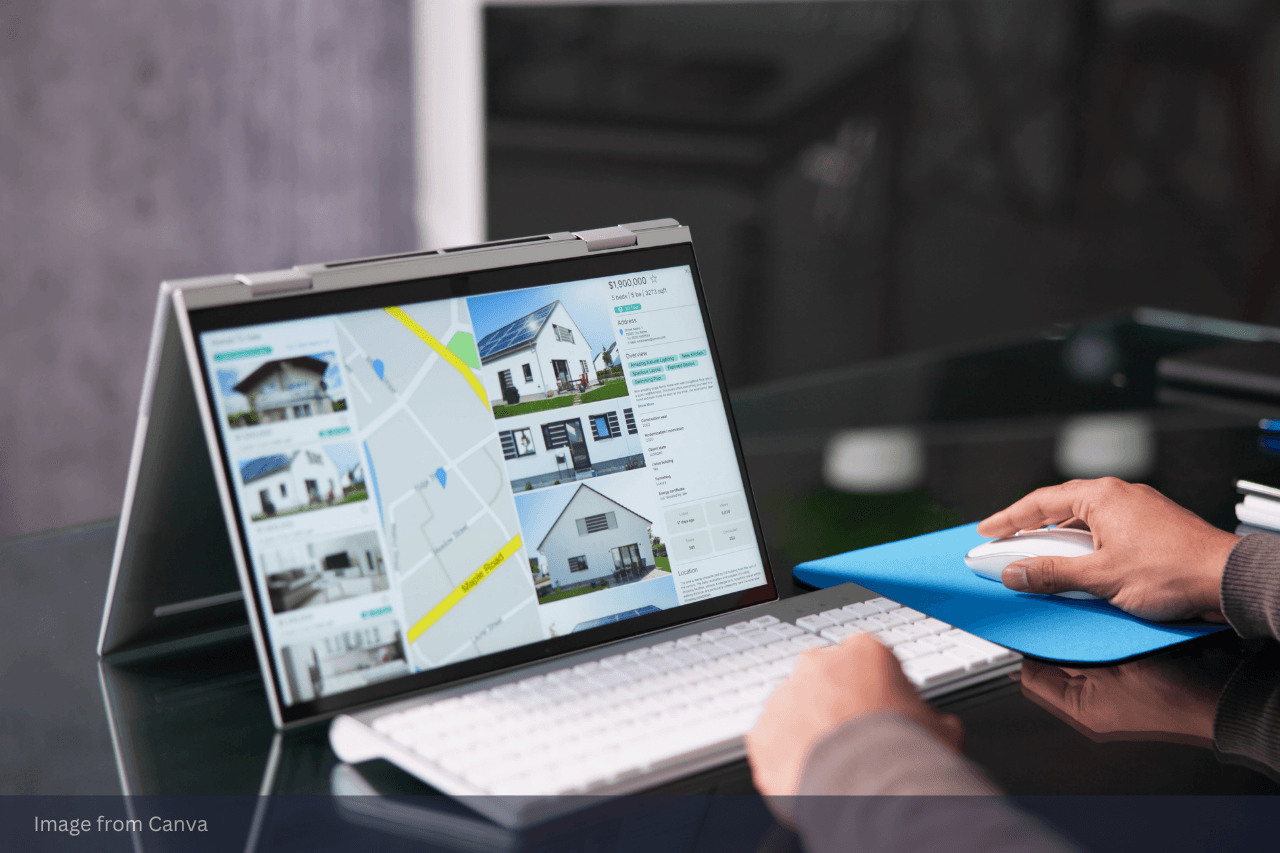Your house can do more than provide shelter — it can work for you. Renting out a property for the first time offers a realistic and proven path to building wealth — one that many have already pursued.
Indeed, HM Revenue & Customs reports that there are currently around 2.82 million landlords in the UK — a clear sign of how appealing property investment has become.
Many of them began with a single letting property, drawn by the promise of reliable rental returns and long-term financial growth. This is not just hearsay; it is certainly a proven strategy.
In fact, according to a study by mortgage lender The Mortgage Works, landlords in the UK earned an average gross rental income of £77,000 in 2024 — and with a typical property portfolio of 7.4, that breaks down to approximately £867 in monthly income per property.
The very same study highlights a compelling statistic: 9 out of 10 landlords report making a profit from their letting activity — a testament to the viability of property as an income-generating asset.
While renting out a house for the first time may seem like an appealing opportunity, there is still crucial groundwork to cover before getting started. Fortunately, this article breaks everything down – from weighing the tradeoffs to learning how to rent out a house step by step.
- Why Private Landlords Are Renting Out Property in the UK?
- How to Rent Out Your House: Step-by-Step Guide
- Understand Legal Responsibilities
- Prepare Your House
- Set the Rent Price
- Market the Property
- Screen and Select Tenants
- Draft a Tenancy Agreement
- Manage Rental Property
- Inside Look at the Realities of Becoming a First Time Landlord
- Renting Out Your House: Frequently Asked Questions
Why Private Landlords Are Renting Out Property in the UK?
Letting property refers to the act of renting out your property to another party in exchange for regular payment. Essentially, it is the practice of making a local or overseas properties available for others to live in or use in exchange for rent.
While this financial venture offers a clear avenue for income generation, it is, like any investment, accompanied by both advantages and disadvantages. Understanding these key points is crucial for aspiring landlords.
Rewards of Renting out Your House
While becoming a landlord involves responsibilities, the numerous advantages often make it a highly appealing venture.
Consistent Rental Income
The primary motivation for being a landlord for the first time is financial gain. A consistent sum of money is received each month from the tenant, which can significantly aid in repaying a buy-to-let mortgage, if one is in place, as noted by financial services company Go Compare.
However, if the property is owned outright, the returns on the investment will be even greater, as there are no mortgage payments to offset the rental income.
Long-Term Investment
Letting property is seen as a long-term investment in the UK, thanks to consistent rental income and strong capital growth over time. Despite short-term fluctuations, average house prices have risen from £1,884 in 1953 to £270,867 in early 2025, according to decking and cladding solutions Cladco Decking.
Additionally, the UK's persistent housing supply-demand imbalance supports sustained value and rental growth, making it a robust and resilient asset over extended periods. The real estate services firm Savills, for instance, projects UK property prices to rise by an average of 23.4% over the next five years.
See Also: Buying Your First UK Home Made Simple
Challenges of Letting Your Property
Letting property may present attractive opportunities, but it is equally important for soon-to-be landlords to be aware of the potential challenges that come with this responsibility.
Strenuous Landlord Duties
Managing a rental property can be one of the most demanding aspects of being a landlord, often requiring time and effort comparable to a full-time job.
From marketing vacant units and screening tenants to handling repairs, collecting rent, and resolving tenant issues, landlords are responsible for all property management tasks, as Southern Horizons Property highlights. This level of involvement demands continuous attention, hands-on coordination, and a readiness to respond at any time.
Thus, leveraging property tools that can simplify repetitive tasks is a strategic advantage for landlords seeking to optimise their operations and maximise their returns.
Ongoing Maintenance Costs
Repairs are an inevitable part of renting out a house, with property owners typically responsible for addressing issues caused by tenants, plumbing failures, or harsh weather. This responsibility has become increasingly costly, with a Tower Gate Insurance study showing that average maintenance expenses have risen by 26.24% since 2022, reaching £1,374.07 per year.
In this case, profitability can be significantly impacted by repair costs, making it crucial to budget for these expenses. Property experts often advise allocating 1% of a home's value annually for improvements to maintain its market worth.
How to Rent Out Your House: Step-by-Step Guide
Thinking about generating income from an unoccupied home but wondering, "How do I rent out my house?" This latest how to rent guide walks first-time landlords through every essential step, from understanding legal obligations and preparing finances to attracting ideal tenants and managing property.
1. Understand Legal Responsibilities
For anyone thinking of becoming a first-time landlord in the UK, understanding the non-negotiable legal duties is paramount. This crucial first step ensures compliance and tenant safety, preventing legal issues.
As highlighted by Sandra Davidson Estate Agents, obligations that landlords must be aware of include:
Safety Standards
- Electrical Safety: Landlords are required to arrange for a certified professional to inspect and test electrical systems every five years and issue tenants an Electrical Installation Condition Report.
- Fire Safety: Landlords must install smoke alarms on every floor with living spaces, fit carbon monoxide detectors in rooms containing solid fuel-burning appliances, and ensure all furniture and furnishings comply with fire safety standards.
- Gas Safety: Landlords are required to schedule a yearly inspection with a Gas Safe registered engineer and issue tenants a copy of the safety certificate.
- Water Safety: Landlords are required to evaluate and manage the risk of Legionella bacteria exposure.
- Repairs and Maintenance: Landlords must keep the property habitable and in good condition, ensuring the structure, utilities, heating systems, and fixtures are properly maintained. They are also responsible for addressing issues such as damp, mould from structural or insulation faults, and pest infestations.
Administrative and Legal Responsibilities
- Deposit Protection: The law requires landlords to secure tenant deposits in a recognised government deposit protection scheme within 30 days of payment.
- Energy Performance Certificate (EPC): Landlords are legally required to supply tenants with a current EPC, with properties needing to meet a minimum efficiency rating of E for new rentals.
- Property Licences: Landlords may need a licence from the local council to rent out their property. Some areas, such as Redbridge, require a selective licence, which can be confirmed through the council’s property licence map.
- Right To Rent Checks: Before granting a tenancy, landlords in England are obligated to check that every adult tenant (18+) is legally permitted to reside in the UK.
- Tax Obligations: Landlords are required to pay income tax on rental income and conduct a yearly self-assessment with HMRC. Other taxes landlords may need to pay in London or across the UK include Stamp Duty, Capital Gains Tax, and National Insurance.
- Tenancy Agreement: A clear and legally compliant tenancy agreement outlining terms and conditions is essential. The agreement or contract could include details such as rental amount, payment method, obligations, start and end date, etc.
Ultimately, these obligations are in place not only to guarantee the safety and well-being of tenants but also to safeguard the landlord's interests.
2. Prepare Your House
Building on the previous step, it is time to make some actionable preparations to ensure the property is ready for tenancy.
Preparing a house goes beyond deep cleaning; it is about making the house safe, legally compliant, and highly appealing to prospective tenants.
Maintenance and Repairs
According to the National Residential Landlords Association, key tasks at this stage include carrying out maintenance and repairs—such as fixing wall cracks, ensuring doors and windows operate properly, mowing the lawn, and diligently completing all necessary repairs and upkeep.
This proactive approach is crucial not only for ensuring tenant satisfaction but also for preventing potential disputes and costly issues in the future.
Safety Checks and Certifications
Crucially, private landlords renting must arrange professional safety checks and obtain necessary certifications, such as a Gas Safety Certificate, an Electrical Installation Condition Report (EICR), and an Energy Performance Certificate (EPC). They must also ensure that smoke and carbon monoxide detectors are fitted and functioning.
See More: How To Be Successful In Real Estate Portfolio Management
3. Set the Rent Price
Having met all legal standards and ensuring the home is market-ready, the next key move is setting the rent price.
This step requires careful consideration, as determining the right amount is often a balancing act—set it too high, and the property may sit vacant for extended periods; set it too low, and the income may fall short of covering expenses or delivering a reasonable return on investment.
To make an informed decision, landlords should review these key factors:
Property Value
According to Landlord Vision, property value establishes the baseline for the rent that can reasonably be charged. This valuation is influenced by factors, including its size, the type of property (i.e., house, condominium, apartment), its location (i.e., proximity to amenities, neighbourhood desirability, economic growth of the area), and its overall condition (i.e. refurbished kitchen, new flooring, fresh paintwork).
A higher property value, often a reflection of these desirable qualities, permits a higher rental price.
Local Market
Determining a property's optimal rental value heavily relies on what tenants are willing to pay for similar offerings nearby. This means landlords must conduct thorough research, comparing their property to others in the same local market.
It is about ensuring an "apples-to-apples" comparison, carefully considering elements like location, square footage, and the number of bedrooms and bathrooms to gauge its rental value.
Analysing the local market is crucial for making informed decisions on rental rates and potential renovations, ensuring the property remains competitively priced.
Property Expenses
Beyond aligning rent prices with the current market, landlords must guarantee that prices cover all expenses and generate profit. This raises the important question: What property costs should first-time landlords consider when setting the rent price? Below are the property expenses to account for:
- Council tax (if unpaid by tenant)
- Insurance (buildings, contents, home emergency, etc.)
- Maintenance and repair costs
- Mortgage payments
- Property management fees (where applicable)
- Utility costs (if covered in the rent)
In essence, generating a detailed list of expenses is relevant to avoid significant loss. While setting a competitive rent price is relevant, the income should also be sufficient to cover all costs and support property upkeep.
4. Market the Property
With the letting property now ready for future tenants, the focus shifts entirely to marketing, with a primary emphasis on maximising online visibility.
Composing Property Listing
This step calls for composing a compelling property listings that showcase the house’s best features. Indeed, Agent Extra cites essential details that are known to quickly grab attention and secure a tenancy online:
- Headline: Highlight the property’s single most compelling feature (i.e., Stunning Riverside Flat with Balcony, Modern City Centre Apartment with Parking) to make a potential tenant stop scrolling.
- Introduction: Provide an overview of the home and its key benefits, serving as a hook to encourage further reading.
- Location: Describe the neighbourhood's appeal, focusing on proximity to transport links, local amenities (shops, schools, parks), and the general lifestyle offered.
- Interior Features: Detail the living spaces, mentioning the number of rooms, significant fittings, modern appliances, and any recent updates or appealing design elements.
- Exterior Features: Outline outdoor aspects like gardens, parking facilities, building type, and any notable views or communal areas.
- Additional Amenities: List extra perks or conveniences that differentiate the property, such as smart home tech, extra storage, communal facilities, or specific policy details like pet-friendliness.
Beyond descriptive features, pertinent advice for first time landlords is to provide high-quality photos; these images often form the first impression and are crucial for attracting inquiries. Incorporating virtual tours can further enhance this visual appeal, helping the letting property stand out online.
5. Screen and Select Tenants
Following marketing efforts, the property should now have garnered interest from prospective tenants, likely resulting in numerous applications for the tenancy. So, the question is: What do I do next?
At this stage, screening and selecting tenants becomes an essential undertaking. Professional Estate Agents Julian Wadden define tenant screening as the process by which landlords evaluate potential applicants to determine their suitability as renters.
However, before commencing the screening process, it is paramount for any landlord to establish selection criteria—this being one of the most crucial first time landlord tips.
To secure the right tenant, here are the common screening criteria to consider:
- Credit History: A strong credit history, as indicated by a good credit score, demonstrates financial reliability. Credit reports reveal how well an applicant manages debts and meets financial commitments.
- Criminal Background Check: A review of past offences helps determine whether an applicant’s history poses legitimate safety concerns for other residents or the property, while still ensuring fair and non-discriminatory screening.
- Income Verification: Steady income is key to reliable rent payments. A typical benchmark is that monthly rent should account for no more than 30% of an applicant’s gross earnings, ensuring affordability and reduced payment risk.
- Rental History: A positive rental track record reflects timely payments, proper property upkeep, and responsible tenant behaviour. Feedback from previous landlords offers valuable insight into an applicant’s reliability.
Essentially, applying these criteria in the tenant screening process helps secure responsible renters while reducing risks to their property.
6. Draft a Tenancy Agreement
According to the National Residential Landlords Association, after securing a suitable tenant, the next critical step is to construct a tenancy agreement. The agreement defines the obligations both landlord and tenant must follow throughout the tenancy, making it essential for each party to have a clear understanding of these expectations.
This brings up an important question: What should a tenancy agreement include? Gov.uk highlights details such as:
- Agreed rental amount and payment method.
- Conditions under which the deposit may be partially or fully withheld (e.g., to cover tenant-caused damage).
- Deposit amount and protection scheme information.
- Details on rent reviews, including timing and process.
- Full property address.
- List of bills the tenant is responsible for.
- Names of all parties involved.
- Specific obligations of both tenant and landlord.
- Start and end dates of the tenancy.
It may also outline:
- Early termination terms and procedures.
- Permissions regarding subletting or taking in lodgers.
- Responsibility for minor repairs not legally assigned to the landlord.
Having these points in writing reduces the risk of conflict and provides security for both parties throughout the tenancy.
7. Manage Rental Property
With the agreement signed and the tenant settled in, property management becomes the final—but ongoing—phase, covering essential tasks to ensure the rental runs smoothly for both sides.
Rent Collection
One of the many tasks involved in property management is rent collection. This involves setting up payment methods, tracking payments and addressing any unpaid dues according to the terms outlined in the tenancy agreement.
Property Maintenance and Repairs
Moreover, regular maintenance and quick repairs are key to keeping the property in top shape. This typically involves routine inspections, addressing tenant maintenance requests promptly, and arranging professional repairs when needed.
Tenant Communication
Maintaining open and professional lines of communication with tenants is a property management task that emphasises building positive landlord-tenant relationships. This includes responding to inquiries, addressing concerns, and providing necessary updates regarding the property or tenancy.
Property management is widely recognised for its laborious nature, and the aforementioned tasks represent just a portion of the ongoing responsibilities involved.
Fortunately, a robust solution exists to ease the administrative load: property management software. This tool automates essential tasks such as rent collection, maintenance tracking, and tenant communication, making day-to-day operations more efficient. While it simplifies management, landlords still need to stay actively involved to ensure everything runs smoothly.
Read More: How to Manage Your Rental Properties with the MyAssets App
Inside Look at the Realities of Becoming a First Time Landlord
It is easy to get swept up in the dream of becoming a landlord, especially with so many how to rent guides painting it as a simple path to passive income. But the reality, for many, is far less straightforward; it is a journey filled with unexpected challenges and significant responsibilities that often go unmentioned.
From understanding legal requirements and preparing the house to setting the rent price, marketing the property, screening tenants, and drafting a tenancy agreement, renting out a home is a comprehensive endeavour. The ongoing work of managing a rental property, including maintenance and handling tenant issues, solidifies this.
At its core, it is a full-time job that demands significant effort, knowledge, and ongoing commitment, which is why aspiring landlords must prepare themselves for the realities of the role and not just the potential rewards.
Renting Out Your House: Frequently Asked Questions
1. What do I need to do before I rent out my property?
Before renting out a property for the first time, a landlord must ensure it meets safety standards and complies with legal requirements. This involves conducting right-to-rent checks, supplying necessary documents such as the tenancy agreement and safety certificates, and securing the tenant's deposit in a government-approved scheme.
2. How easy is it to rent out a house for the first time?
Renting out a property for the first time can be a complex process, but with the right preparation, it’s entirely manageable. Understanding legal responsibilities, safety requirements, and the financial aspects is key.
Although handling everything is a cheaper option, many first-time landlords find it beneficial to hire a letting agent to assist with tasks such as marketing the property, screening tenants, and managing the property.
3. How do I set the right rent price for my property?
Determining the right rental price begins with researching similar properties in the area to understand general rates.
From there, assess the unique aspects of one's property—such as its size, condition, and available amenities—alongside current market trends and tenant demand.
It is also crucial to account for all ownership costs, including mortgage, insurance, and maintenance expenses, ensuring the rental income covers these outgoings while delivering a fair return.
MyAssets: The Organisation Tool for Renting Out Second Home
Learning how to rent your home is only the first step in becoming a first-time landlord. The real challenge is the ongoing management, where hands-on involvement and proper documentation drive profitability. But the critical question here is: How do you keep them organised and running smoothly? A property organisation tool like MyAssets is the ideal solution for this.
MyAssets streamlines a landlord’s record-keeping by providing a centralised platform for all essential documents. This includes storing digital copies of legal certificates and agreements, which are vital for compliance and dispute resolution, as well as property specifications like purchase price and current valuation, which are crucial for tracking asset performance and making informed financial decisions.
Additional costs of renting out a property can also be accounted for within the platform, allowing landlords to easily track expenses and assess profitability.
For a more detailed record, users can note the number of bedrooms, bathrooms, and car parks, as well as the measurements of internal areas, patios, and land, making it seamless to answer inquiries from potential tenants.
Worried about overlooking the valuable art collection, sentimental items, or fixtures left in your second homes? MyAssets offers peace of mind with its smart asset linking feature. This tool allows users to catalogue every belonging and collectable in a digital inventory, linking each item directly to the property it belongs to.
It gets better—MyAssets securely stores all essential contacts in one place, facilitating quick access to service providers, agents, tenants, and other key connections whenever they’re needed.
Enjoy an organised and centralised rental property management experience with MyAssets free for 14 days.






